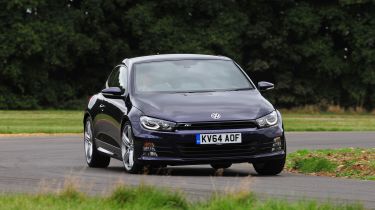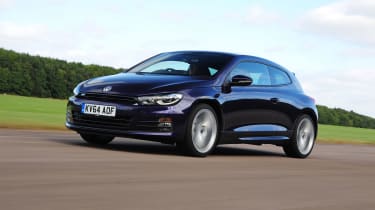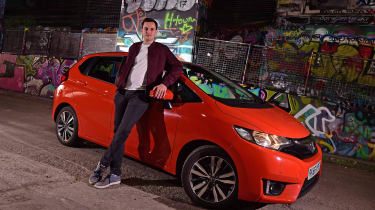Volkswagen Scirocco (2008-2017) review - Engines, performance and drive
Strong engines with reasonable performance for the Scirocco, but other VW Group products - and rival cars - drive better

The Volkswagen Scirocco is poised on a twisting road, but the latest Audi TT or BMW 2 Series feels far more alive and agile, while a SEAT Leon SC edges ahead for overall composure. It was best-in-class in 2008 but things change at a huge pace nowadays.
The standard adaptive dampers ensure the ride isn’t overly firm if you stick to the comfort setting, but on the optional 19-inch wheels (standard on the R-Line and R) the Scirocco can thump a bit too much over poor surfaces. The fact that the latest-generation Golf handles and rides with more polish also makes the coupe feel a bit dated.
Top-spec R models offer the greatest thrills, with a 276bhp turbocharged engine. However, if you want something a bit easier to live with, pick the GT spec with a TSI engine. It offers a 178bhp 2.0-litre with strong pulling power, if not with the same linear delivery as newer engines. Alternatively, you can have the GT with the punchy 2.0 TDI diesel.
The firm’s Adaptive Chassis Control does pay dividends in the Scirocco, however. Selecting the Sport setting stiffens the dampers, and sharpens throttle and steering responses. The extra weight added to the steering might become tiresome however, so there’s a handy Individual mode where you can mix and match your favourite settings, then save the configuration.
Engines
There are currently four petrol engines (in two capacities) and two diesels in the Scirocco range. A GTS variant with the 217bhp engine from the Golf GTI is the most recent arrival, which plugged a performance gap between the regular range and the rapid R.
Used - available now

2023 Audi
A3 Sportback
19,678 milesManualPetrol1.0L
Cash £17,324
2024 Audi
A3 Sportback
30,795 milesManualPetrol1.5L
Cash £19,750
2024 Audi
A3 Sportback
17,333 milesManualPetrol1.0L
Cash £18,811
2021 Mercedes
A-Class
41,806 milesAutomaticDiesel1.5L
Cash £16,051The first petrol offered is the 1.4 TSI, delivering 123bhp at 5,000- to 6,000rpm and 200Nm from 1,400- to 4,000rpm. It can only be had with the six-speed manual transmission and while it’s a fine, smooth little unit, it’s really only in the range as a tempting value option; you’re probably better off going for one of the four bigger powerplants.
The remaining engines are all 2.0-litres in capacity, with a six-speed manual as standard or a six-speed DSG automatic as a £1,500 option. Picking the automatic gearbox has no impact on acceleration for the 2.0 TSI and the 2.0 TDIs, but on the R it marginally improves both the car’s acceleration and its economy/emissions.
Performance is brisk on all Sciroccos, as even the 1.4 can do 0-62mph in 9.3 seconds, while at the other end of the scale the DSG-equipped R blasts to 62mph from rest in just 5.5 seconds – and has to be electronically limited to a top speed of 155mph.
The 2.0 TSI petrol engine is our preferred choice for the Scirocco. It delivers 178bhp at 4,200- to 6,200rpm, with 280Nm backing it up from 1,250- to 4,400rpm. This engine balances this decent performance with affordability and reasonable running costs. The 217bhp version is quicker still, but the running costs are a little higher.
The 2.0 TDI diesel comes in either 148bhp or punchier 181bhp guise. Both engines offer maximum brake horsepower between 3,500 and 4,000rpm, but the 181bhp holds onto its peak torque for longer, meaning faster acceleration times. Both engines are strong and smooth, although the 148bhp is going to win more fans as it uses less fuel and emits less CO2.
The R gets its own potent 2.0 petrol but, weirdly, it’s not the same engine as found in the contemporary Golf R, and nor does the Scirocco get the Golf’s four-wheel drive system. It makes do, therefore, with slightly less power and torque, although 276bhp at 6,000rpm and 350Nm from 2,500- to 5,000rpm are still very healthy figures.









